James Caldwell Memorial (1923-1945)
Introduction
Text-to-speech Audio
Images
Postcard of the memorial
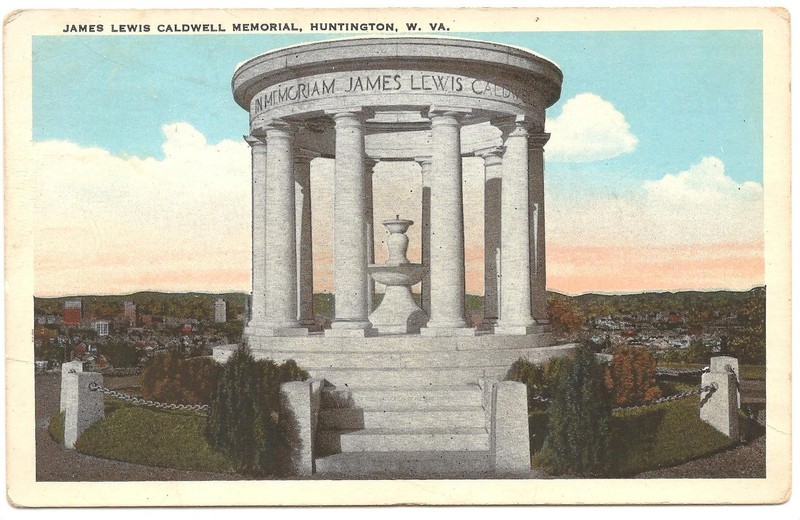
The James Lewis Caldwell Memorial, formerly located at Gobblers Knob, off of Caldwell Rd.
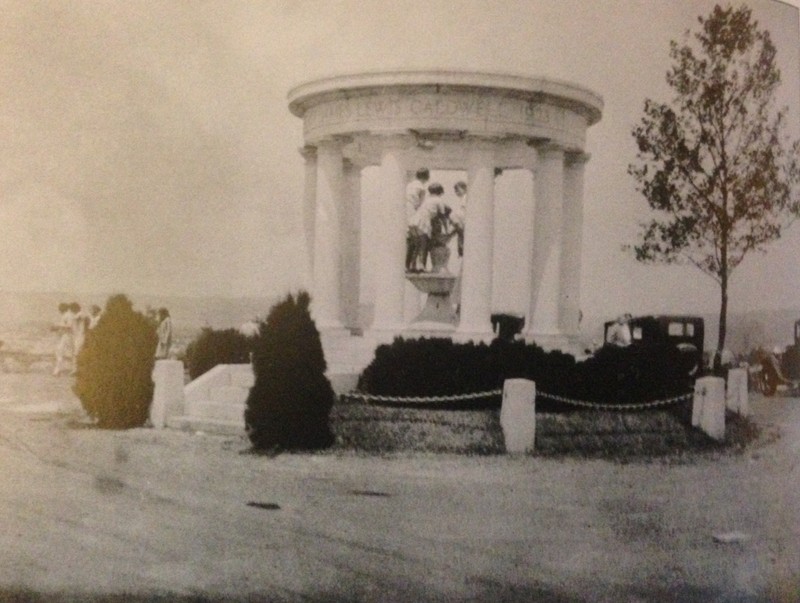
Postcard of the James Lewis Caldwell Memorial, circa 1940
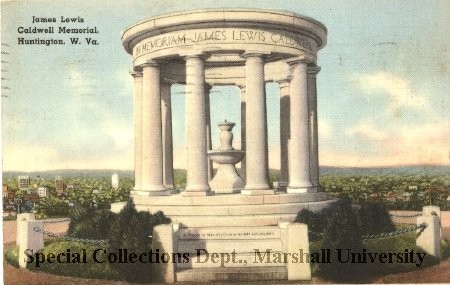
A couple posing at the memorial
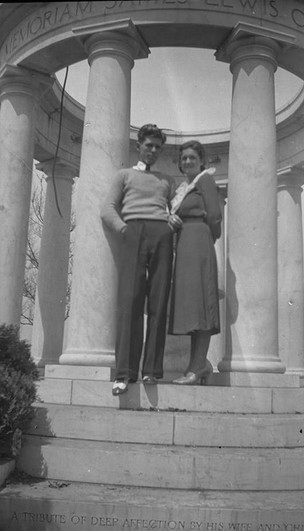
Two women posing in front of the memorial
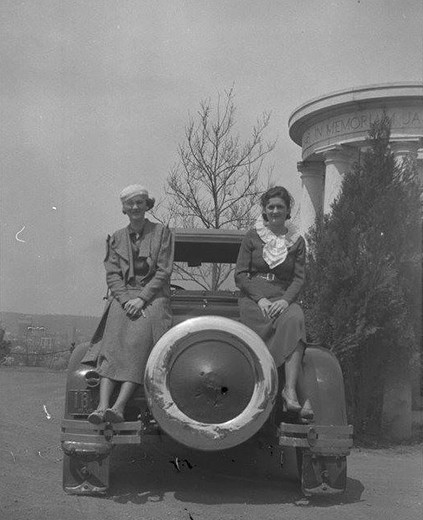
James Lewis Caldwell as a young man
.jpg)
James Lewis Caldwell as a young man
.jpg)
James Lewis Caldwell. Photograph provided by Marshall University Special Collections.
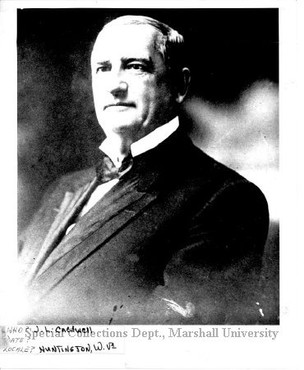
James Lewis Caldwell
.jpg)
Caldwell at his desk, circa 1916
.jpg)
Mary O'Bannon Smith Caldwell, circa 1900
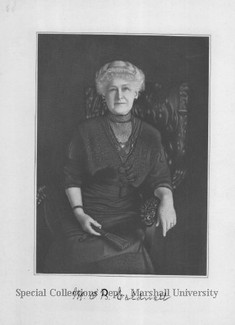
Caldwell's daughter, Onida Caldwell, circa 1890
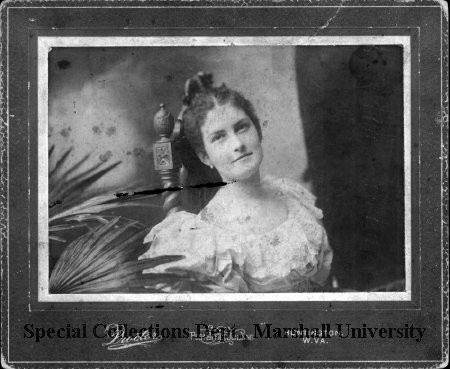
Onida Caldwell-Watts, circa 1900
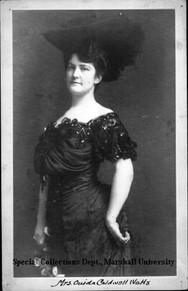
Backstory and Context
Text-to-speech Audio
James Lewis Caldwell was born in Elizabeth, Writ County, Virginia in 1846. Not much is known about his childhood, though at some point his family lived in Meigs County, Ohio, where Caldwell attended school. In 1863, at the age of 17, he enlisted in Company F of the Sixtieth Ohio Infantry. He participated in some of the fiercest battles of the Civil War such as the Wilderness, Spotsylvania, Cold Harbor, Petersburg, and Appomattox. Following the war, Caldwell resided near Wheeling, while working in the insurance business. Sometime during the 1870s, he moved to Guyandotte where he worked in the lumber industry.
Caldwell later moved to the new city of Huntington in the early 1880s, where he became active in local business. By 1884, he had organized the First Bank of Huntington and would serve as its president for 40 years. “He brought the bank to a point where it was the largest in the state in resources, having assets of over eight million dollars.”[1] He also organized the Huntington Electric Light & Street Railway Company, which built a pioneering electric railway, in 1892. In addition he organized and built the Guyandotte Valley Railway, now part of the Chesapeake & Ohio System; was president of the Consolidated Light & Railway Company at Republican, Illinois; president of the Dingess Run Coal Company, secretary and treasurer of the Logan Cannel Coal Company, and a director and member of the executive committee of the Huntington Land Company. Caldwell also served as a delegate at large at the National Republican Convention of 1904, in a sign of his growing influence.[2]
Caldwell died on October 18, 1923. In 1926, the Caldwell family received permission from the Huntington Board of Park Commissioners to erect a marble fountain honoring him for his service in the Union Army and to the City of Huntington. Built at a cost of $20,000 the memorial was located in Ritter Park off of Caldwell Road on the lookout known as “Gobbler's Knob.” Over the years, the memorial fountain was vandalized and fell into disrepair: people carved their initials into the marble and granite, the lights circumscribing the monument were stolen, and the fountain itself eventually stopped running. It is uncertain what provoked the vandalism, although it is possible that Confederate sympathizers were to blame. The relatively isolated location of the fountain also made it easy for perpetrators to go unnoticed. In 1939, Ida Caldwell McFaddin, who lived in Beaumont, Texas, returned to visit family in Huntington. She was shocked upon her return to see the memorial vandalized and not cared for. McFaddin then requested that the Huntington Park Board either repair the memorial or tear it down. For several years following McFadden’s disappointment of the monument’s condition in 1939, she and the Park Board argued over what to do with the memorial. The Park Board resisted, but McFadden was persistent with her complaints about the memorial's condition. Finally, the memorial fountain was dismantled in 1945.
[1] West Virginia In History, Life, Literature and Industry, (The Lewis Publishing Company, 1928), Volume 5, 285.
[2] West Virginia In History, Life, Literature and Industry, 286.
[3] James E. Casto, “Lost Huntington: Caldwell Memorial,” The Herald Dispatch, December 09, 2013. http://www.herald-dispatch.com/features_entertainment/lost-huntington-caldwell-memorial/article_ef54a1db-fe52-5db2-a88d-14be6a5a7f9b.html.
Sources
West Virginia In History, Life, Literature and Industry, (The Lewis Publishing Company, 1928), Volume 5, 285-286.
James E. Casto, “Lost Huntington: Caldwell Memorial,” The Herald Dispatch, December 09, 2013.http://www.herald-dispatch.com/features_entertainment/lost-huntington-caldwell-memorial/article_ef54a1db-fe52-5db2-a88d-14be6a5a7f9b.html
https://www.herald-dispatch.com/special/lost_huntington/lost-huntington-caldwell-memorial/article_ef54a1db-fe52-5db2-a88d-14be6a5a7f9b.html
https://marshall.pastperfectonline.com/photo/A632B4CA-F2DB-4A84-8876-445156263620
https://www.facebook.com/photo.php?fbid=1968454326528084&set=p.1968454326528084&type=3&theater
https://www.facebook.com/photo.php?fbid=1358814597492063&set=p.1358814597492063&type=3&theater
https://texashistory.unt.edu/ark:/67531/metapth706416/m1/1/
https://texashistory.unt.edu/ark:/67531/metapth706453/m1/1/
https://texashistory.unt.edu/ark:/67531/metapth706394/m1/1/
https://texashistory.unt.edu/ark:/67531/metapth706334/m1/1/
https://marshall.pastperfectonline.com/photo/9A50CF1F-59EF-4EFE-A0E4-827913526976
https://marshall.pastperfectonline.com/photo/C47B852F-5EFB-4428-9ACE-685384177603
https://marshall.pastperfectonline.com/photo/FC85DCE1-F9F6-4053-80D6-458775060675
